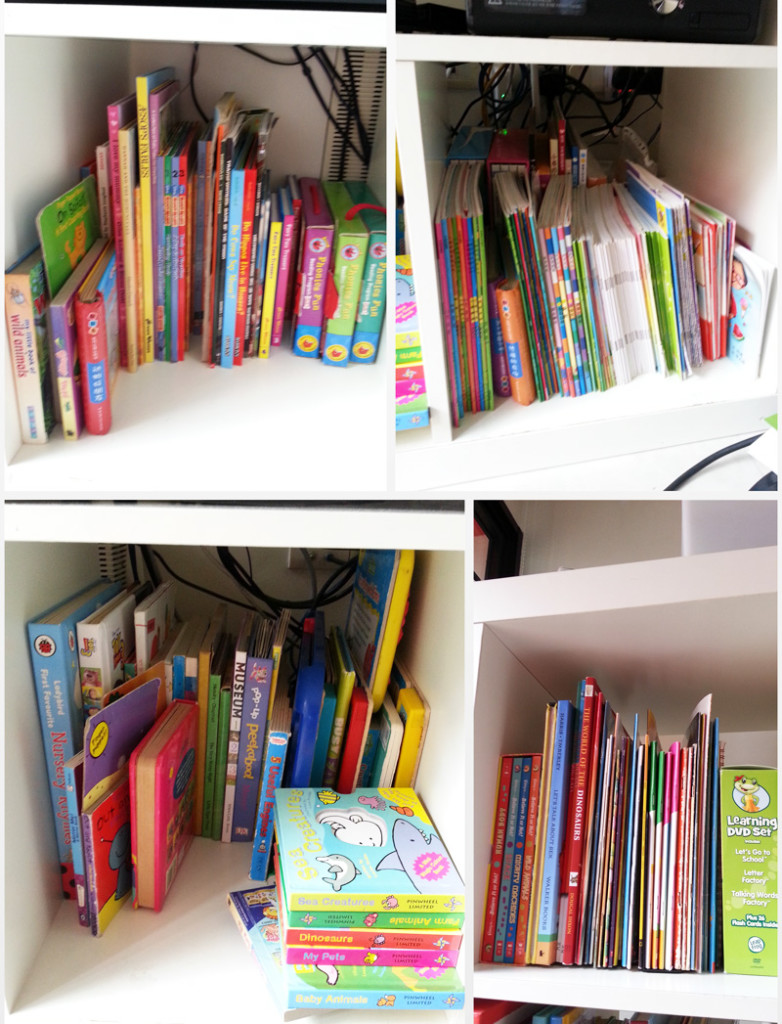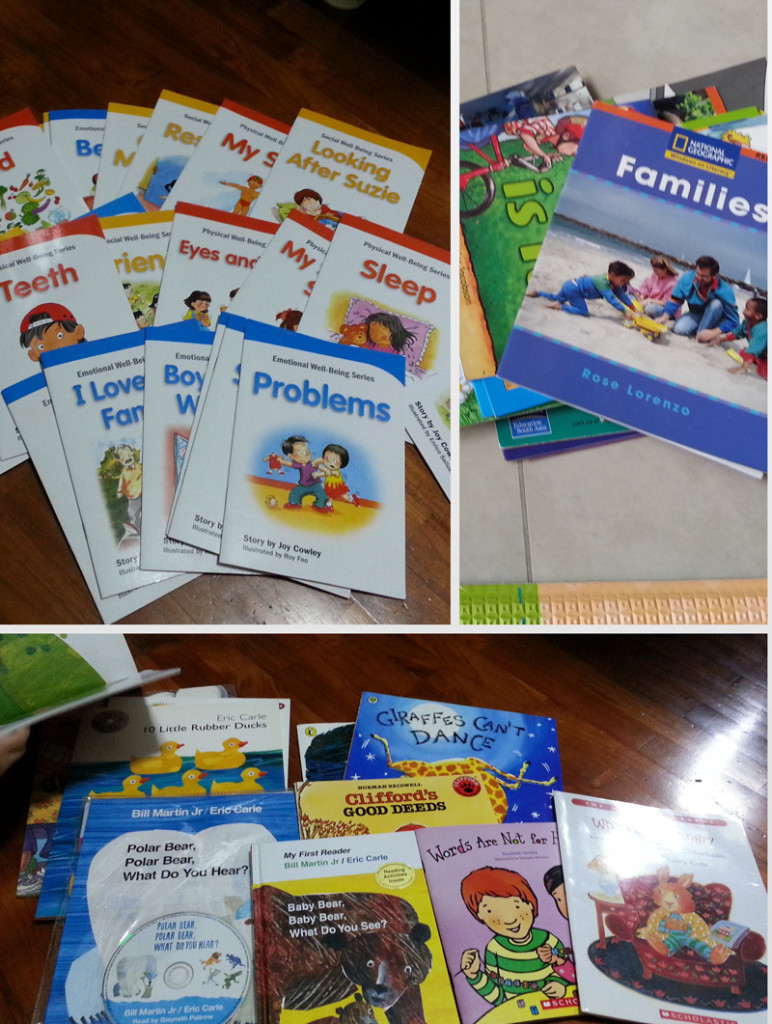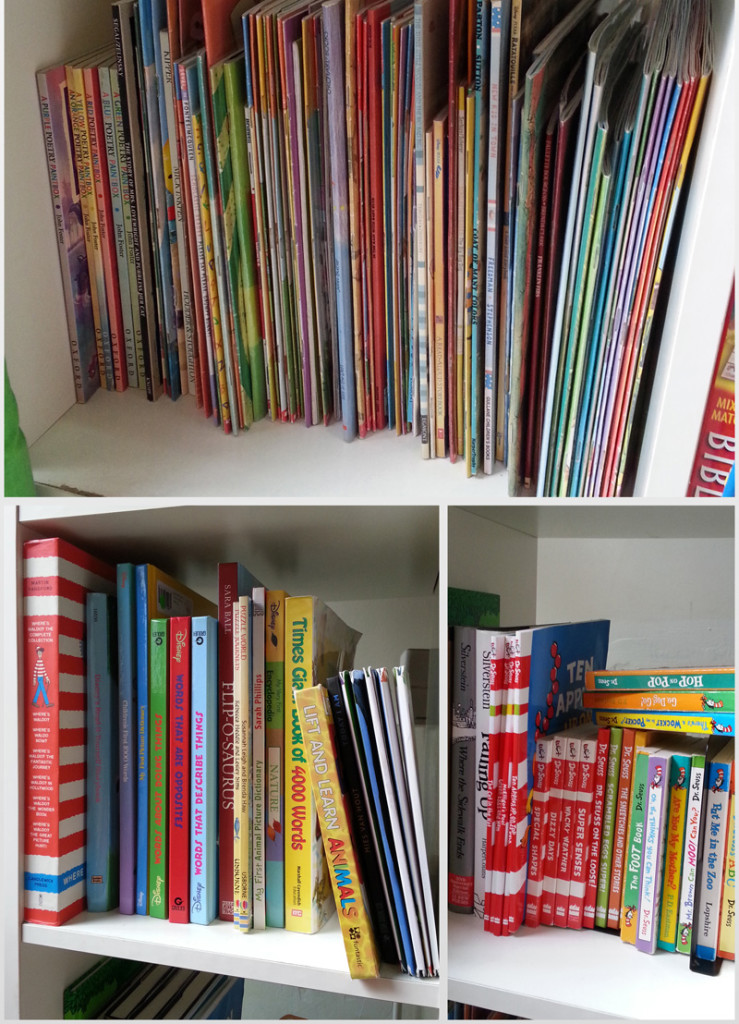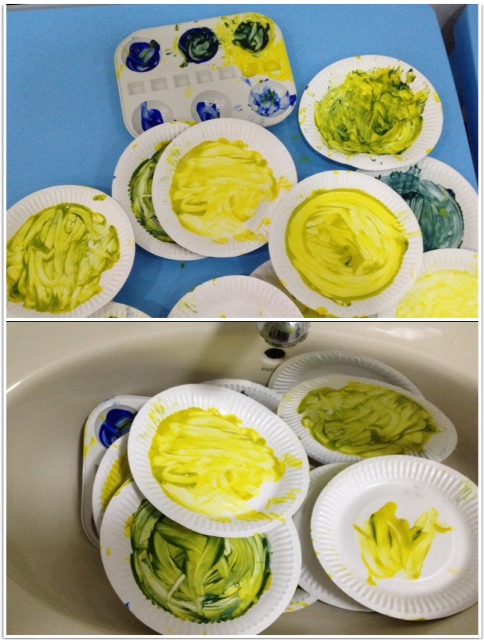It’s no rocket science that in order to raise a reader, you need to do one most important thing.
Surround the child with books…

On our shelves (clockwise), we’ve got Read Aloud books, Chinese books, non-fiction books and pop-up board books
Books…
And more books…

Our Social-Emotional Intelligence Readers, Nat Geo Readers, and our predictable favourites from Eric Carle and other well-loved authors
Simply having books everywhere around the child will make reading the default activity every time they are at home, especially when they are tempted to say, “I’m bored, what do I do now?”
Over the years, we’ve acquired many books. I wanted to recreate for my kids what I had as a child – access to books, books, and more books. I was an avid reader as a a kid, and am still one (an avid reader, not kid), in part because I had all the wonderful people in my life buying me books on every possible occasion, and I had wanted so much for my kids to fall in love with reading like I did. To me, books are a wonderful investment for their future.
Besides surrounding them with books and giving them easy access to them, here are some tips to get your kids to start reading, and hopefully enjoy reading:
1. Reading aloud to them often, preferably daily
Brain-development research shows that children aren’t ready to learn the mechanics of reading until around age 5. The best way to kick start their love for reading is to read to them even when they can’t understand everything you say. When they are infants, you can try reading aloud to them for 10 to 15 minutes a day, point to pictures and explain the illustrations. At preschooling age, you can increase the length of time by reading aloud to them for about 30 minutes a day.
According to Put Reading First: The Research Building Blocks for Teaching Children to Read, “The more models of fluent reading the children hear, the better….Reading to children also increases their knowledge of the world, their vocabulary, their familiarity with written language and their interest in reading.” So the next thing you can do besides surrounding them with books is to make reading aloud a routine so the children get to hear the stories that can fuel their imagination. This gets them excited about reading.

Reading aloud Dear Zoo to the Kao kids: this huge flip-the-flap book is a predictable classic for all ages
I read aloud to the children as often as I can, even if it means reading the same book for the nth time. I started off with simple stories that would interest them, and have now progressed to reading aloud Road Dahl’s best loved tales chapter by chapter. There’s minimal illustrations in such books and this forces the kids to listen closely and imagine the characters and setting for themselves. We’ve just finished reading Fantastic Mr Fox, and the kids were absolutely gripped by the story that was read aloud to them over a course of two weeks! As part of their bedtime routine, Fatherkao also reads one book from the Mr Men’s Collection to the kids before they get tucked in by me. You can imagine how thrilled the kids were when we started this routine to have their father tell them stories of Mr Bounce, Mr Grumpy and all the other interesting characters in Mr Men!

A very expensive collection, which we managed to snag at a greatly discounted price at the recent Popular Sale!
2. It’s not boring to them, repeat when you can!
If there’s two things preschoolers love, it has to be predictability and repetition. Predictable books use repetitive language and/or sequences, rhythms, and rhymes and allow children to predict what the sentences are going to say, thereby increasing enjoyment and helping to build vocabulary and memory skills. In addition, reading the same book again and again helps develop a child’s vocabulary and improves their reading skills.
One of the books we have in our home library – which I have read for I-dunno-how-many-times to each child (I’m thinking at least 30?) since the day they were little babies in my arms – is this simple, predictable book Ten in the Den by John Butler:
It has the most beautifully painted illustrations, and the simplest of narratives – Little Mouse asks his friends in the den to “roll over, roll over” only to find that he is the only one left in the den. He then scampers to join his friends at the bottom of the hill. Ben loved it as a baby and so did Becks. And now when I read it to Nat, the older two are still so intrigued by this little story that they pick up the book after I am done with it and read it in its entirety purely from memory. The adult might find it a chore to be reading it with dramatic tone and gestures for the nth time but I’m telling you, it’s a whole new experience every time for a child even if it’s the fourth year he’s hearing this story. Kids love a good story repeated, and they will pick up a familiar book any time to revisit those positive feelings they felt when the story was read to them.
3. Buy them if you can
I have nothing against going to the library, and I bring the kids there quite often to browse the children’s collection there. But there’s something about buying books which allows the children to read and reread that borrowing doesn’t. Books are like an investment, really. These stories are repositories in your children’s memory bank which will be recollected and revisited when they are older, even in adulthood. Besides, there’s this special feeling a child would have when he holds the book that he owns which cannot be compared with holding a library book. Especially if the story strikes a chord – that’s when that connection with reading magically happens.
There are many avenues to purchase books without having to rob a bank. Scholastic sends out quarterly book lists to childcare centres and sells paperbacks at a huge discounts to them, so you could ask around and pool your orders together with friends who have kids enrolled in childcare. There are also book sales happening ever so often at the Singapore Expo, like those organised by MPH and Popular. You can also check out The Groovy Giraffe, Singapore’s one and only remainder bookstore, as well as Book Depository, which offers free shipping worldwide for good deals.
4. Don’t pressure; motivate instead
There was a point in time I was pressurising Ben to start reading on his own. I drilled him in sight words. I made him learn his phonics. I forced him to read Graded Readers. All because I read a blog that was written by a mother whose kid started reading on his own at three. I had thought that that was the norm, and started heaping tremendous expectations on my firstborn. After a couple of failed attempts, I decided to do a bit more research in this area, and came to realise one thing: you don’t raise a reader overnight. It takes consistency and effort, and a lot of encouragement and motivation. What I wanted was not to have Ben to read. I wanted more; I wanted him (and Becks, and Nat) to LOVE reading. It’s extremely vital for a parent to follow the child’s pace and not to force the issue. That’s the only way that a child becomes a reader for life.
5. Create a comfortable, well-lit spot to read
This seems common sense but it takes deliberate planning, really. Find a spot in the house that takes advantage of natural lighting especially during the day. At night, make sure that there’s good light for the kids to huddle around you for a good story. When it’s comfortable, they will read more, trust me on that!

The sofa in the living room next to our panel of full length windows is the best place to read in the day!
~~~
Nurturing a love for reading is a process, a process that cannot be hurried. But it can certainly be very enjoyable if you surround your kids with imaginative stories and books that will take them to worlds unknown.
What are some things you do for your kids to nurture a love for reading? Do share them with me in the comments below!







2 Comments
and to let the kids see me reading!
started reading your blog a few weeks ago.. and i read all your old posts too! very good read! looking forward to your new posts : )
Thanks, stayathomemumof3! Yes, and to demonstrate by example! The kids need to see us snuggled up with a good book but I find it quite a challenge because they are always clamouring for my attention, so I end up having to read aloud my own book sometimes! Haha. 🙂